Bell 407 Rolls-Royce 250-C47B Uncontained Engine Failure after Bearing Failure (N120HH)
On 24 June 2020 privately owned Bell 407 N120HH was destroyed after an uncontained Rolls-Royce 250-C47B engine failure near Long Marston in Warwickshire, UK.
The Accident Flight
The UK Air Accidents Investigation Branch (UK AAIB) explain in their safety investigation report (published 30 September 2021) that:
The pilot collected the helicopter the day before the accident from Thruxton Aerodrome, Hampshire, where it had been undergoing an annual maintenance check. The maintenance work package included…the 300-hour maintenance inspection on the engine. Unscheduled work arising from this maintenance included replacement of the main transmission freewheel unit and pitch horns. The latter resulted in a requirement for a torque check on the main rotor mast assembly after the helicopter had flown 3 to 4 hours.
Almost one hour was flown that day and several flights were intended on the day of the accident, intended to culminate in a return to Thruxton for the torque check.
Before the first [55 minute] flight the pilot completed a walk-around, which included opening the engine cowlings and checking the fluid levels; he did not find any abnormalities.
The engine oil level was showing as FULL on the sight glass. The pilot reported that the oil tank sight glass was clear and simple to read. By slightly nudging the helicopter he could clearly see the oil level moving.
The oil level was still at FULL prior to the second flight, a private sightseeing flight from Wellsbourne Mountford Aerodrome, Warwickshire over the Malvern Hills. On board was the pilot and one passenger.
Two witnesses noticed the helicopter as it was flying towards Wellsbourne (Witness 1 and 2). The first witness was just south of Bidford-on-Avon. He saw the helicopter flying towards him from the west and could see the helicopter clearly through his binoculars. He described seeing what looked like a “contrail” coming from above the cabin but below the rotor. He watched the helicopter as it passed overhead and flew to the east; the ‘contrail’ continued throughout this time. In the distance he saw it turn to the south but did not see the accident.
The occupants were not aware of the ‘trail’ behind the helicopter
The second witness, who was near Dorsington described seeing “white smoke” coming from the helicopter and took a couple of photographs.
As it passed him, he heard a “popping noise”, saw the smoke turn grey and saw the helicopter descend to the ground near Long Marston.
The helicopter was flying at approximately 1,800 ft amsl (approximately 1,700 ft agl) and 118 kt with the engine torque at 70 to 75%. The first indication in the cockpit of a problem was an amber [Full Authority Digital Engine Control] FADEC FAULT light on the Caution and Warning Panel (CWP).
When the pilot checked the instruments, he saw the NR [Main Rotor Speed] was at 100% and the NP [Power Turbine Speed] was at 90%. In normal powered flight NP is equal to NR.
He recalled looking at the torque and seeing a “5” but could not remember if it was fifty something percent or 5%, he did not recall the NG [Engine Gas Generator Speed]. The other engine instruments appeared normal.
The pilot…
…reduced the throttle slightly to match the throttle position to the NG then selected the FADEC mode to manual . He tried moving the throttle slightly and the engine responded as expected; he then selected the FADEC back to automatic. A few seconds after he did this an amber FADEC DEGRADED light illuminated on the CWP.
This was about 45 seconds after the initial warning and NR and NP were unchanged.
He increased the throttle slightly again to bring NP to just below NR to confirm he still had control of the engine. He then returned the throttle to the FLY detent. At this stage the pilot recalled there had been no audible warnings and he just had the two cautions on the CWP… The passenger also remembered just seeing the two lights.
Approximately 27 seconds after the second caution light…
…there was a “mechanical snapping noise”, a violent yaw to the left, the red engine out warning illuminated, the torque dropped to 3% and a horn was heard. The pilot recalled a continuous horn, but the passenger recalled an intermittent horn. Other cautions and warnings also illuminated but the pilot did not recall which ones. He realised the engine had failed and immediately “fully” lowered the collective and moved the cyclic control rearwards to slow to 60 kt. Once established in autorotation he selected a field and made a MAYDAY call on the Wellsbourne frequency.
The pilot executed an autorotation into wind into a field.
[T]he pilot had not flown with an instructor or practiced an engine failure and autorotation for just over three years prior to the accident flight.
As soon as they were on the ground the passenger smelt smoke and the pilot noticed an “off white coloured” liquid on the windscreen. They exited the aircraft uninjured and saw flames below the rotor head.
This B407 had not been fitted with an optional fire detection and warning system, so the pilot was unaware of the fire previously.
Apart from the tail section, the helicopter had been badly damaged by fire. There were distinct impact marks on the tail boom indicating contact with a main rotor blade and the tail rotor drive shaft, which had sheared. There was no indication that the vertical fin and tail skid had struck the ground on landing, the landing skids did not appear to be splayed, they were not cracked and there was no other structural indication of a hard landing.
The AAIB Safety Investigation
The AAIB explain that:
The helicopter was not fitted with a flight recorder, nor was it required to be. The helicopter had been retrofitted, under a Supplemental Type Certificate, with a Primary Flight Display (PFD) and a Multi-Function Display (MFD). The PFD and MFD store flight parameter data, once per second, on an internal memory card, with both units sharing and storing the same data. The system configuration on N120HH did not record engine related data. Warnings and cautions are not recorded. Despite severe thermal damage, data was recovered from the PFD and the [engine Electronic Control Unit] ECU.
The AAIB fused data from these two sources:
The earliest recorded faults were at 1117:17 hrs (almost 40 minutes into the flight], both relating to torque sensing. As torque is sensed using oil pressure, this may be the first recorded indication of a loss of oil rather than a fault with the electronic sensing system. The loss of torque sensing means that the reversionary governor would not have been capable of taking control; however, there would have been no effect on engine operation if the primary governor was in control. While the loss of torque sensing would have affected the cockpit torque indication, it would not have triggered a CWP alert.
At about 1117:58 hrs, the ECU control status switched from being governed by the power turbine, to reaching a control limit and then being in a flameout situation.
The pilot reduced the collective within about four seconds, the NR dropped to 69% before increasing again to 82%. The recorded NR then stayed between 68% and 82% until the collective was raised during the landing, approximately 60 seconds after the flameout.
The recorded NR during the autorotation was below the 85% lower NR limit in the [Rotorcraft Flight Manual] RFM.
After the flameout, the IAS reduced over about 30 seconds to stabilise between 75 kt and 82 kt before reducing as the helicopter approached the landing flare. The descent rate varied around -2,000 ft/min until approaching the ground when it was smoothly reduced. The pitch up for the flare started at approximately 70 ft, with an IAS of 74 kt. A ‘g-force’ parameter showed little activity during the landing. The limited sample rate of the parameter means it is unlikely to have recorded the peak force experienced during the landing.
The [engine Measured Gas Temperature MGT dropped sharply to 700°F at the point of flameout and then with some initial variation climbed to 1,080°F by the time the helicopter landed. Throughout the ECU recorded period of continuous data, the NP stayed at 0%. The torque was 4% at the start and dropped to 0% at the point of flameout. NG dropped to zero within about seven seconds at which point the ECU recorded a fault with the secondary NG sensors.
The 300-hour engine inspection included “oil flow checks to ensure that sufficient oil was being circulated round the system and not being restricted by the build-up of carbon on components”. This had been found satisfactory.
The oil filter and No 1 bearing pressure reducer were also cleaned and both [Magnetic Chip Detectors] MCDs were checked. The only other component in the oil system that was disturbed was the oil cooler fan, this required re-balancing on refit following removal to enable lubrication of the tail rotor drive shaft splines. The combined engine and fuel assembly filter did not require maintenance. The last time that the oil system main supply and return pipes were removed was 130 flying hours prior to the accident flight when the rear engine firewall was replaced due to cracking.
Oil found on the tail boom matched engine oil. Examination of the wreckage revealed that:
The engine casing was ruptured and inspection of the interior of the engine showed that the [Gas Producer / Gas Generator] GP turbine shaft had sheared and that both GP rotor discs had burst.
Parts of GP1 had been retained but other parts had escaped the energy absorbing ring and were located both within the engine bay and on the ground near the wreckage.
There was evidence that some [oil system] interconnections had been severed by the released turbine rotor discs.
Detailed engine examination revealed no evidence of ingestion of debris into the compressor but that:
The GP1 rotor shaft had fractured and the tie-bolt which locates the GP turbine rotors had sheared in overload in line with the GP1 disc and shaft, separating the curvic couplings in the process. [T]his was assessed as secondary damage resulting from the breakup of the GP turbine discs.
Computerised Tomography (CT) scan showed the No 8 bearing was “dry with no evidence of oil or carbon residues”.
The bearing was removed with the remaining GP1 rotor shaft section seized in place. Detailed inspection found the cage had seized onto the outer race due to overheating. This type of damage typically occurs when the cage expands into the race while it is rotating. The designed split in the outer race was noted to gape, and likely to indicate excessive hoop stresses from the thermal expansion of the cage. The assembly was stripped to inspect the ball bearings. All the balls were misshapen with none of the original contact surface remaining. The inner race exhibited smearing on the rear lip indicating the balls were sliding rather than rolling over the circumference.
Inspection of the outer race also noted a circumferential burr to the front lip. This would also correlate with the condition of the bearing degrading prior to the disc fragmentation.
The PT bearing support structure showed contact damage on its hub face. The axial aligned labyrinth air seal was displaced radially from axial movement and orbiting of the rotating GP rotors.
Both the No 6 and No 7 roller bearings had disintegrated, with no distinguishable material remaining other than remnants of the inner and outer race.
The No 5 bearing, on which the power turbine rotates, showed dark carbonated residues from the increased thermal environment during the event. There were no obvious signs of wear and the bearing assembly rotated freely
The spline adaptor which transmits torque from the GP turbine assembly into the GP turbine to compressor coupling shaft had splayed radially indicating high temperature and forward movement of the GP turbine assembly,
Approximately half of the GP1 disc was recovered from the engine bay, which comprised of eight separate fragments (not including the shaft) of varying sizes.
Detailed inspection of the disc showed the features of failure to be those associated with overload only with no evidence of structural degradation due to overheating. Further analysis of the turbine blades showed evidence of grain structure degradation due to overheating induced by friction which is indicative of a heavy rub against another structure. The heat affected structure indicated frictional temperatures in the rub region were in excess of 1,150°C which was high enough to cause plastic deformation in the aerofoil structure.
Approximately one eighth of the GP2 disc was recovered.
The largest fragment of rotor was examined and found to have failed in overload, with multiple radial cracks in the machined face of the rotor rim. The remnants of the turbine blade were found to have experienced similar heating effects to the blades on GP1.
A review of the Rolls-Royce 250-C47B service history identified 7 previous oil loss events since 2002. Two, N407KH and 5N-BIC, involved uncontained turbine disc failures.
In each case there were:
- Torque meter indication faults observed prior to the engine power loss.
- Oil deposits found externally on the aircraft fuselage or ground.
- Significant damage to the GP rotor thrust bearings and caused associated secondary damage.
In five cases there was evidence of incorrect installation of oil system components.
AAIB Safety Analysis
The AAIB determined that:
There was no evidence of an oil fire having occurred in or around the bearing cavities. From the condition of the bearings it was concluded that a bearing failure was the most likely initiating factor for the failure of the discs.
The No 8 bearing operates in the hottest part of the engine and the damage it sustained could be accounted for by either a mechanical failure or extreme overheating. However, the nature of the damage to the bearing was more typical of overheating.
The AAIB believe that a local restriction in oil supply was unlikely but that it is .
…probable that during the accident flight the helicopter developed an oil leak which caused the smoke trail and led to the under reading of the torque meter. The fact that the oil on the tail boom was not thermally degraded indicates that the leak most likely occurred prior to the uncontained engine failure and consequent fire.
Given the extent of the fire which destroyed most of the oil system components, it was not possible to determine the source of the oil leak.
With insufficient oil to lubricate and cool the No 8 bearing it would have overheated and started to fail, eventually causing the bearing to lose its ability to provide axial and radial location of the GP turbine shaft. This axial movement of the shaft would have caused contact between the GP turbine splined adaptor and the PT drive shaft resulting in frictional heating. The spline adaptor was splayed radially by this contact indicating that the GP rotor was still intact and generating load, which is further evidence that a failure in the GP assembly was not the initiating event.
As the spline adaptor splayed, the GP rotor would have decoupled from the compressor allowing the turbine to momentarily overspeed and orbit off-centre. The increasing temperature, lack of lubrication and change in load on the No 6 and 7 bearings would have resulted in their destruction as they countered the high-speed orbiting of the GP turbine shaft. While the No 6 bearing supports the PT, it is located in very close proximity to the No 7 bearing and would have been similarly affected by the high temperatures and loads.
Damage to the PT bearing support structure and aerodynamic blades show that the GP rotors made contact with the static structure. The heating effects from the friction resulted in plastic deformation of the blade material. This would have initiated cracks on the rims of the discs where the loads were highest. The overspeed would have accelerated rapidly until the stresses in the turbine rotors were too great and resulted in failure of the discs in overload. While the GP2 rotor is designed to have a higher burst speed than GP1 (such that once GP1 bursts GP2 would normally decelerate), the contact with the PT support structure due to the axial movement of the GP rotor had the effect of reducing the GP2 burst speed. The effect was a near simultaneous release of both GP rotor discs.
The applicable certification requirements require the containment of blade debris, not a disc burst.
The precise source of the fire and when it started could not be positively determined. The most likely source was from the released GP rotor fragments severing oil and or fuel pipes [with escaping engine airflow providing an ignition source].
Fuel continued to flow after landing as the fuel valve had not been shut.
The pilot was not aware of the fire during the descent and said he did not have time to switch the fuel valve OFF.
The manufacturer highlighted that the requirement to shutoff the fuel valve is already captured in the emergency procedures published in Section 3 of the Bell 407 RFM and covers the safety measures necessary for the pilot to safely land the helicopter in the event of an engine failure or in-flight fire. Both emergency conditions require the throttle to be rolled to the off position, followed by switching the fuel shutoff valve off. However, to provide more information to pilots…
“The manufacturer is revising the data section of the Bell 407 Rotary [sic] Flight Manual to add the following clarification in section 1-25-D for the Fuel Shutoff Valve: ‘Shutoff valves isolate fuel from the engine compartment during shutdown or in the event of an engine fire’.
Also:
The helicopter manufacturer added information to the supplementary material to the Bell 407 Rotary [sic] Flight Manual to inform pilots that unusual torque indications might be the result of a loss of engine oil.
Two AAIB Safety Recommendations were made regarding the Failure Mode and Effects Analysis (FMEA) for the engine, and the fire resistance and crashworthiness of rotorcraft components.
Safety Resources
The European Safety Promotion Network Rotorcraft (ESPN-R) has a helicopter safety discussion group on LinkedIn. You may also find these Aerossurance articles of interest:
- Training Weaknesses Feature in Fatal MD600N Accident
- Engine Life Limit Exceedance Caused Logging Helicopter Fatal Accident
- Engine Failure after Inadvertently Being Put Back into Service Incomplete
- Coking Causes Power Loss: Australian AS350BA
- Fire After O-Ring Nipped on Installation
- Prior Engine Mount Damage Lead to Fatal Aerial Saw Crash
- RCMP AS350B3 Left Uncovered During Snowfall Fatally Loses Power on Take Off
- Fatal Engine Power Loss: Powerline Helicopter Not Modified IAW OEM Recommendations
- Forced Landing after CAMO Underestimated Operation in Dusty Environments
- Prompt Emergency Landing Saves Powerline Survey Crew After MGB Pinion Failure
- Air Tour Helicopter Force Landing After Improper Installation of Tail Rotor Bearings
- Maintenance Misdiagnosis Precursor to EC135T2 Tail Rotor Control Failure
- Fatal S-61N Dual Power Loss During Post Maintenance Check Flight
- EC135 Main Rotor Actuator Tie-Bar Failure
- Bell 429 TR Pitch Change Link Bearing Failure
- S-61N Damaged During Take Off When Swashplate Seized Due to Corrosion
- EC225 LN-OJF Norway Accident Investigation Timeline
- Sikorsky S-92A Loss of Tail Rotor Control Events
- Misassembled Anti-Torque Pedals Cause EC135 Accident
- Fatal $16 Million Maintenance Errors
- Loose Engine B-Nut Triggers Fatal Forced Landing
- Loose B-Nut: Accident During EC130B4 Maintenance Check Flight
- Robinson R44 Power Loss: Excessive Lubricant
- Wasp Stung By Lack of Lubrication
- Uncontained CFM56-7 Failures: Southwest B737-700s
- Uncontained PW1524G Failure During CS100 Certification Testing
- Machining Defect Cause of V2500 Failure
- B787 GEnx Fan Shaft Failure
- USAF Engine Shop in “Disarray” with a “Method of the Madness”: F-16CM Engine Fire
- Inadequate Maintenance, An Engine Failure and Mishandling: Crash of a USAF WC-130H
- NTSB Confirms United Airlines Maintenance Error After 12 Years
- 17 Year Old FOD and a TA-4K Ejection
- Machining Defect Cause of V2500 Failure
- ‘Aggressive’ Grit Blasting Maintenance Leads to Engine Fire & IFSD
- Micro FOD: Cessna 208B Grand Caravan Engine Failure & Forced Landing
- Cessna 208 Forced Landing: Engine Failure Due To Re-Assembly Error
- NDI Process Failures Preceded B777 PW4077 Engine FBO
- King Air 100 Uncontained TPE331-6 Failure – Inappropriate Repair Scheme
- UPDATE 20 November 2021: NVIS Autorotation Training Hard Landing: Changed Albedo
- UPDATE 7 August 2022: Fuel Tube Installation Trouble

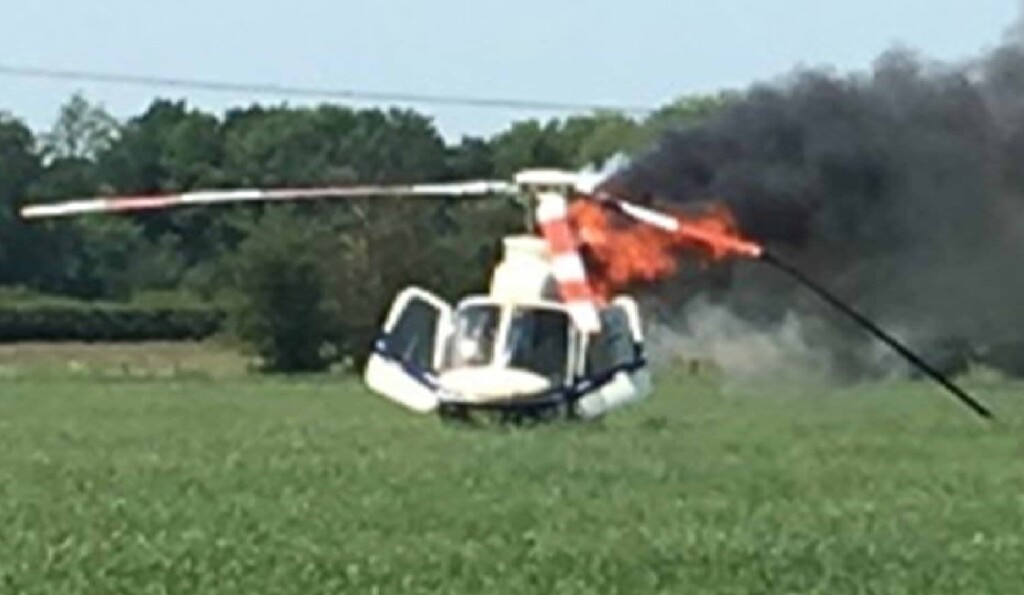

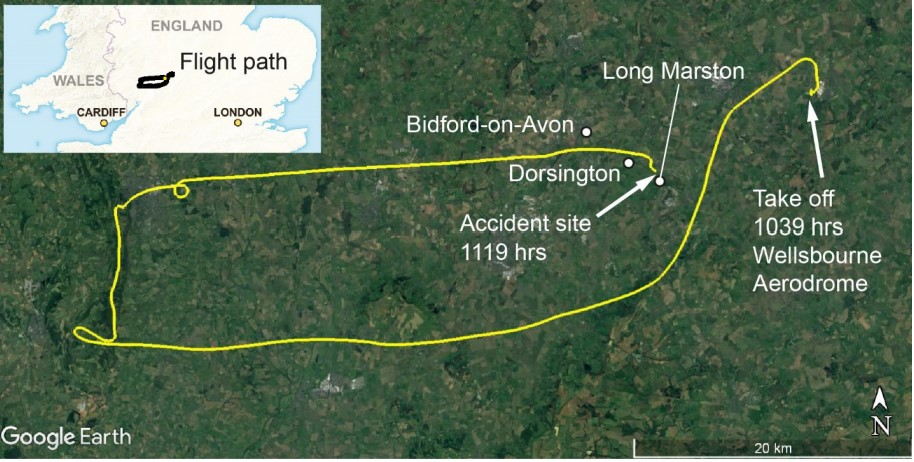
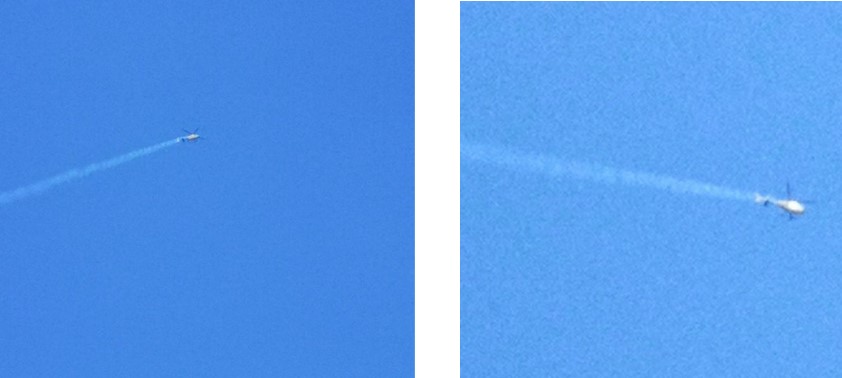
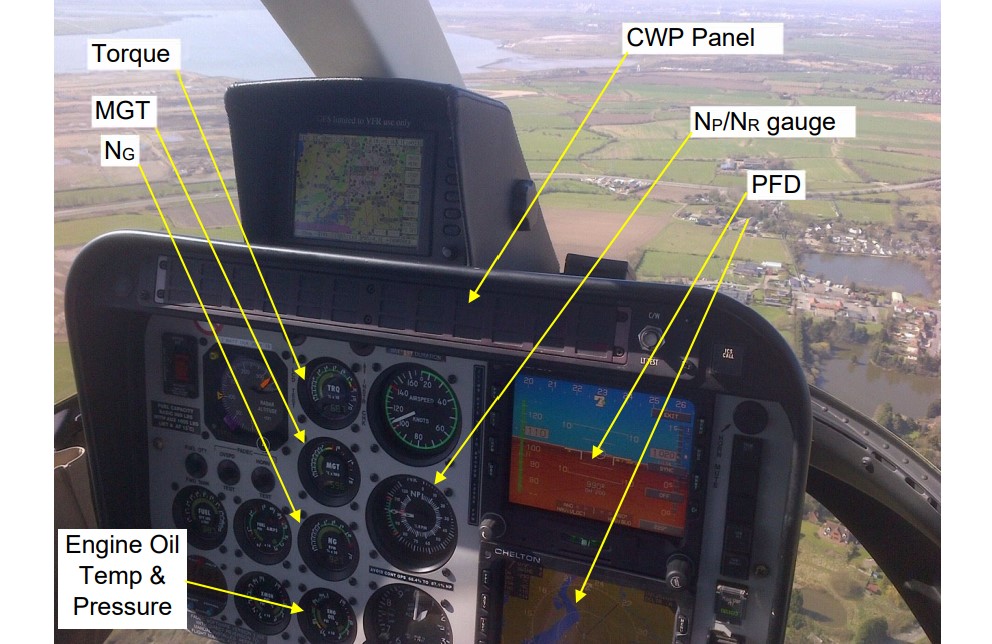

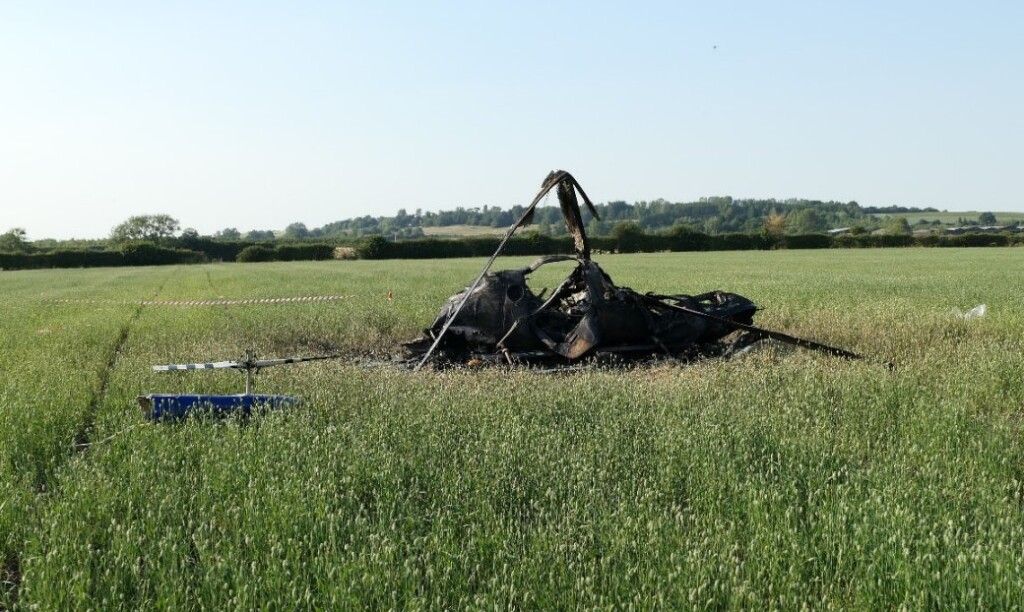
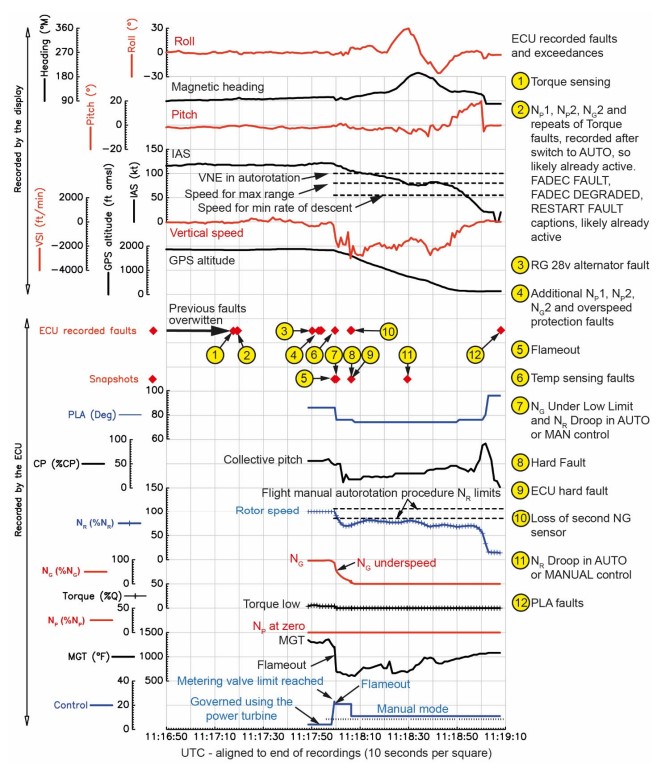
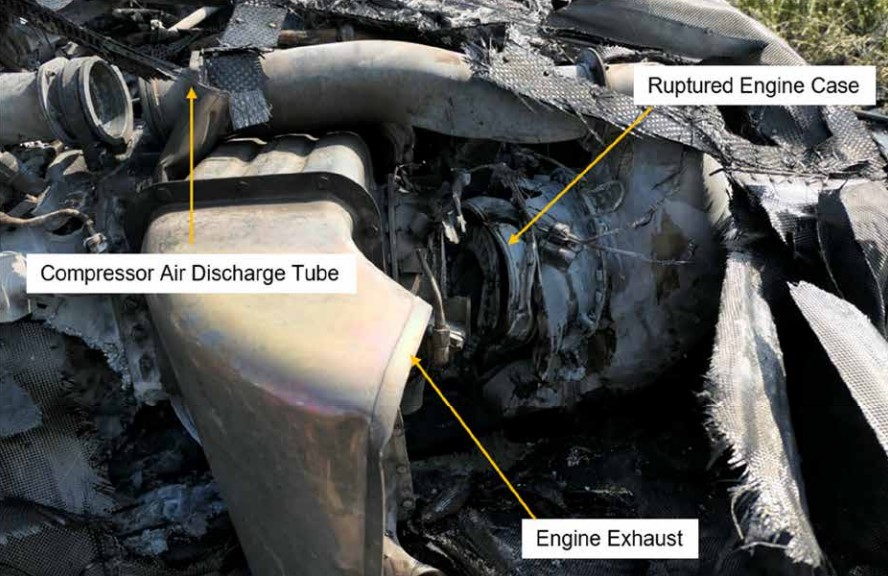
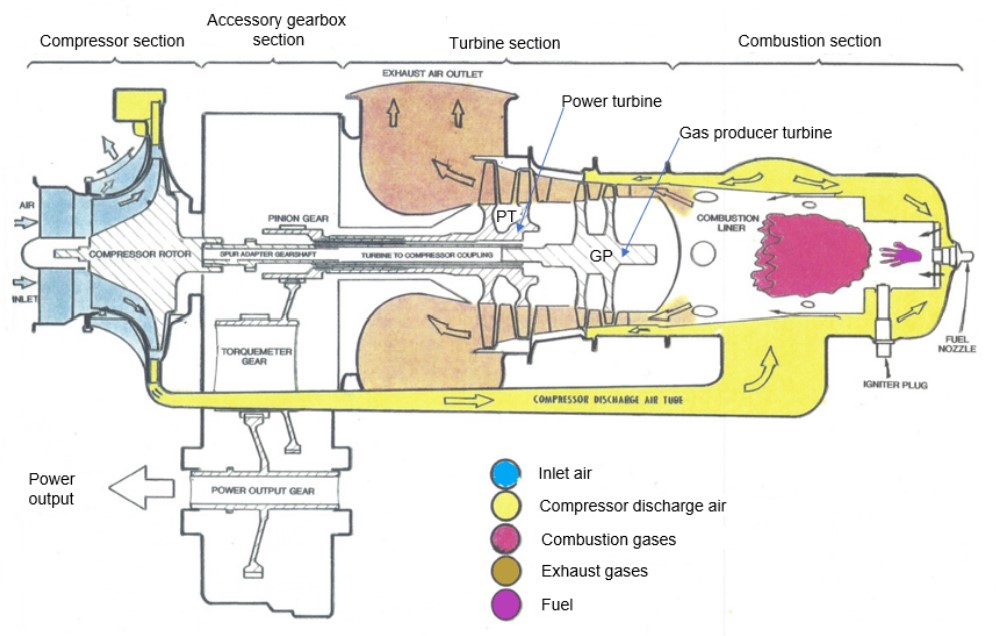
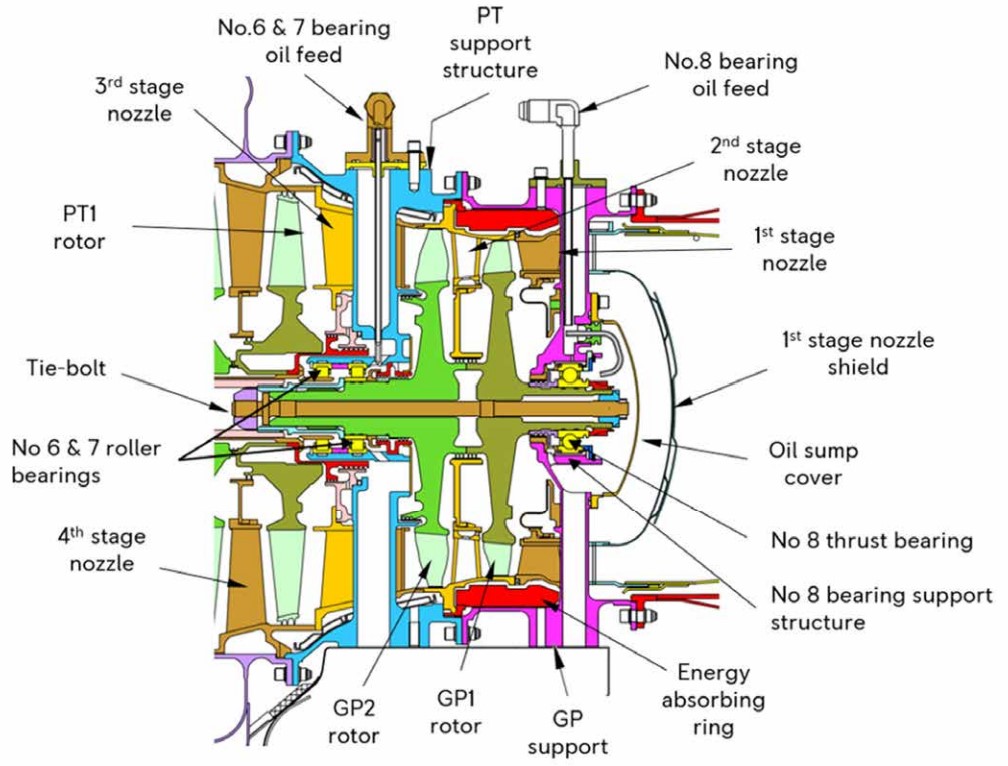
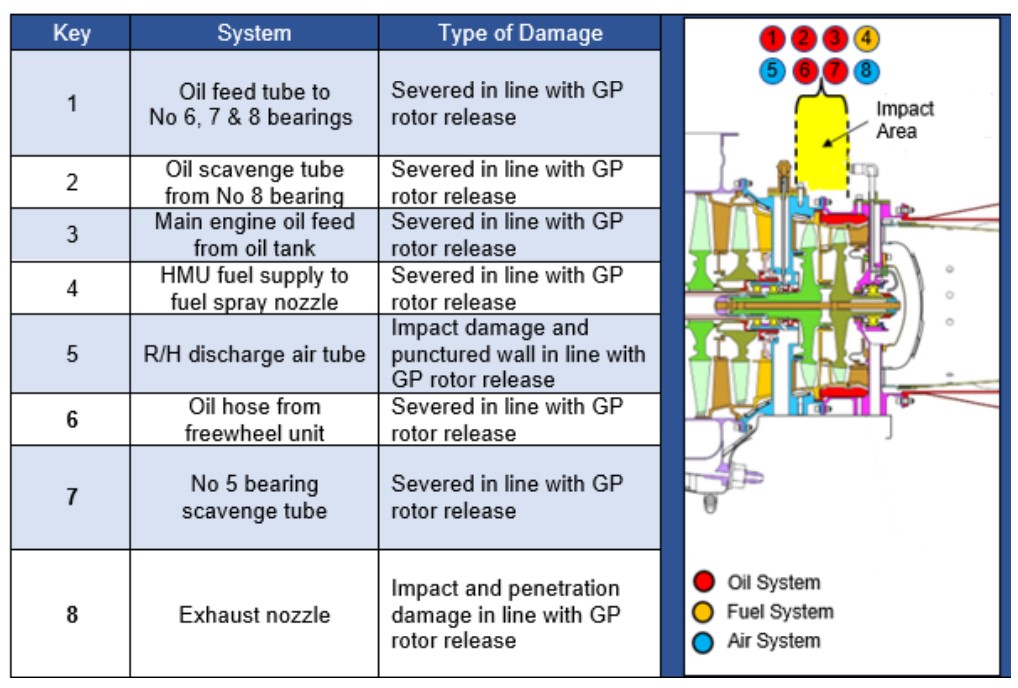

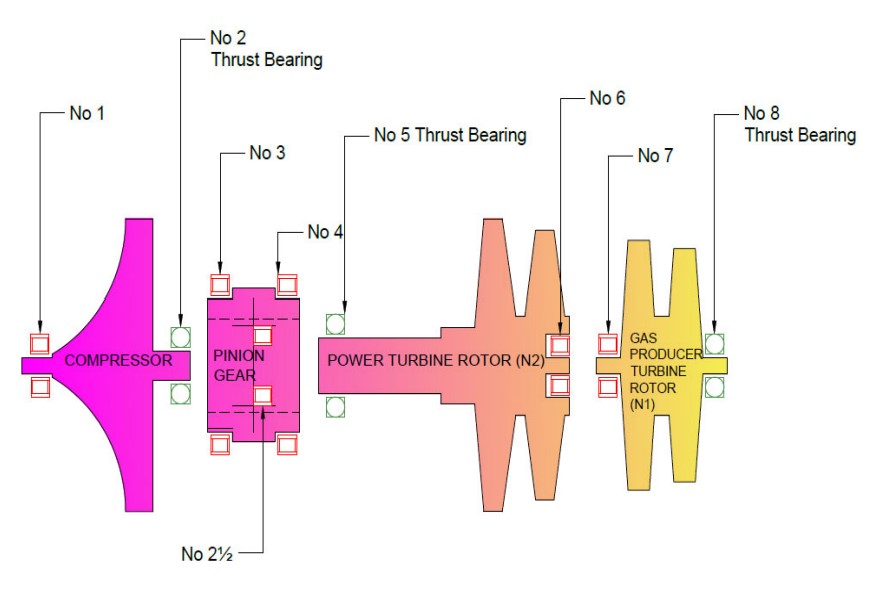

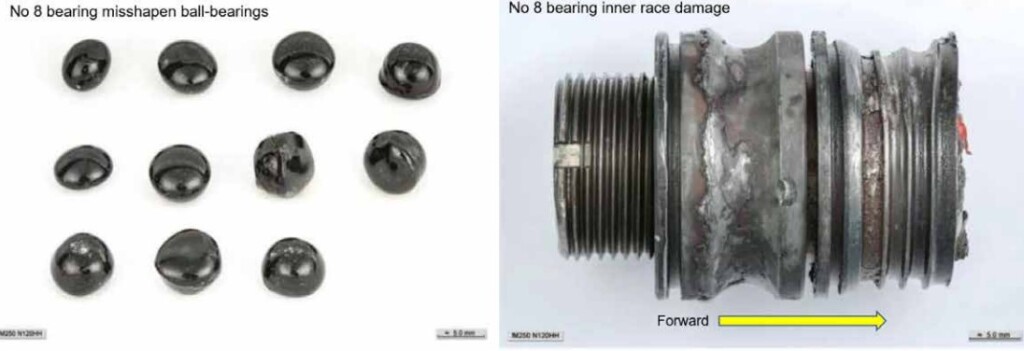


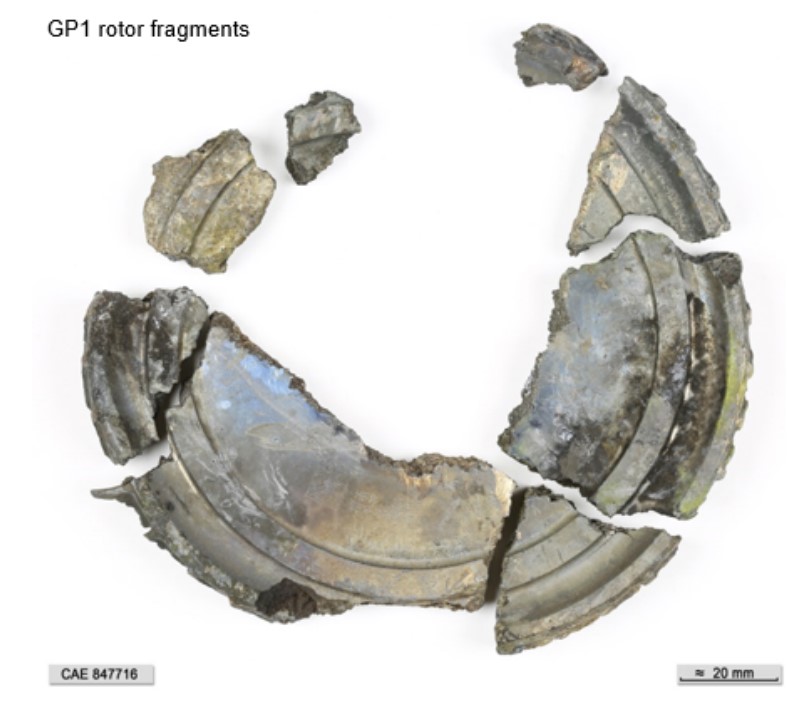
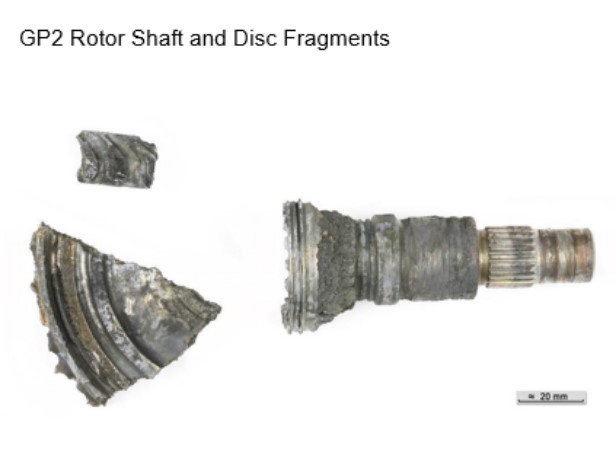

Recent Comments